Going to a gym for the first time can be quite daunting for most. You may not know how to choose the right gym for you, what to wear and what to do when you’re there. It won’t take long for you to understand how it all works but for the first few visits, don’t be afraid to ask a staff member, book in with a personal trainer, or ask a friend who either goes regularly or is just starting out too.
How to Choose a Gym That’s Right For You
Most Australians living in metropolitan areas are spoilt for choice when it comes to gyms in their area. With three or four gyms located an easy drive away, you might not know which one to choose over another. Here are some points you could consider when making your choice.
Gym’s Offering
One of the most important aspects of finding the right gym is deciding what you want most and will use in a gym. Is it group classes or access to a personal trainer? Look at the timetable for their classes and make sure it will fit with your schedule or ask how you can access a personal trainer.
Distance from Home
If you’ll be visiting the gym a few days per week, you will want a gym that’s easy to get to and has convenient parking so you can get in and out quickly. Consider if it will be easier to go to a gym that’s close to work or home. Not many people need a gym that’s open 24 hours, but consider what times you’re most likely to attend and check how busy the gym is if it’s peak time.
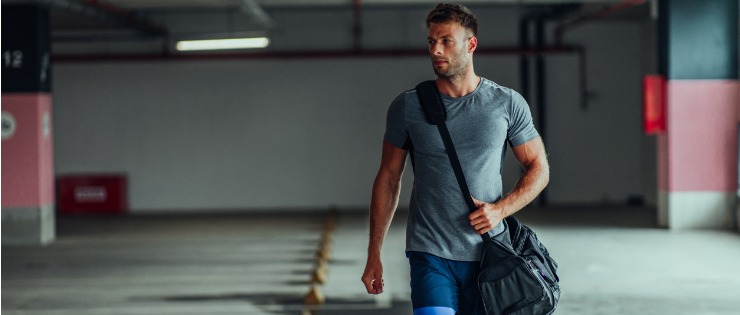
Specialised
If you’re looking for a gym that can help delay surgery for an existing condition, look at Kieser Centres. HIF allows members to claim rebates for tailored physiotherapy and supervised exercise programs at Kieser Centres to support people who are suffering from chronic hip and knee osteoarthritis and spinal issues. The goal of the programs is to use physical therapy for a 12 or 18 week program to prevent or delay hip, knee and spinal surgeries.
Cost
The cost of a gym membership can add up quickly. Be sure to find out the costs and details of any lock-in contracts. Ask about a free trial to make sure you’re completely happy with the gym before agreeing to a lengthy contract.
Creche
If you need a gym with a creche, visit the staff and facilities to see if it’s well suited to your child.
What to Take & Wear to the Gym
Don’t feel you need to buy expensive brand name clothing to fit in at the gym. They won’t help your performance any more than no brand gear. Wear clothes and shoes that make you feel comfortable. Before you attend your first session, ask what to bring. Most gyms require you to bring a water bottle and to use a towel on any shared equipment.
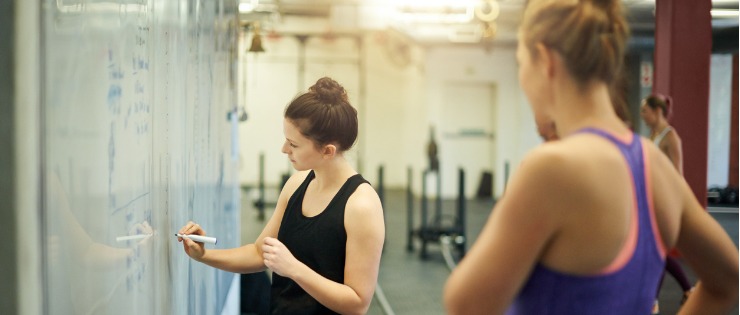
Gym Goals
It’s important to set yourself some goals for the gym, but don’t make them too difficult to achieve. You want to make sure you keep going back to the gym to achieve your goals. In the early weeks, set a goal of attending the gym X times per week. As your confidence and fitness improves, you can set harder goals like lifting X kg, walking further on the treadmill or doing push-ups on your toes.
Gym Warm-Ups
A proper warm-up will protect you from injury, which could see you needing to pause or give up your gym membership. You want to elevate your heart rate and warm up your muscles and joints. Some easy warm-up exercises include:
Beginner Cardio Exercises
If you’re wanting a healthy heart from your gym sessions, there are a few cardio exercises that will see you improve your heart’s fitness.
Use the treadmill
Hop on a stationary bike
Use the rowing machine
Do a spin class
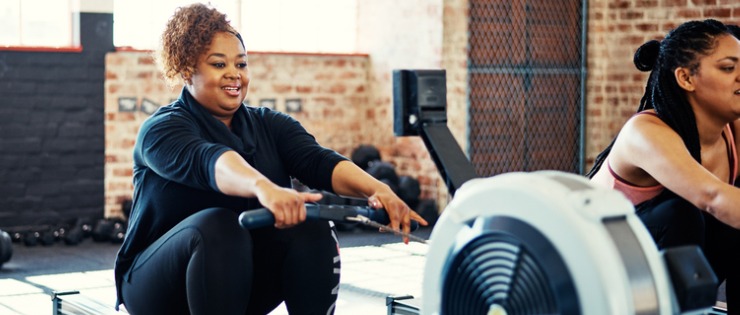
Beginner Lower Body Exercises
If you want to improve the strength and appearance of your legs, try the following exercises and remember to breathe as you make slow and precise repetitions. Good technique is better than speed for effectiveness and to prevent injuries:
Dumbbell Step-Up
While holding dumbbells at your side, place your foot on the step and contract the glute muscles on the same side as your leading leg while you step up.
Leg Curl
Use the leg curl machine to strengthen your quads. While seated, pull the lever to position the bar over your shins. Slowly push your legs upwards against the bar, then slowly lower them again without releasing tension too quickly.
Seated Leg Press
Work your quads, glutes and hamstrings by sitting on the machine with your feet placed shoulder length apart on the plate in front of you. Let your legs take the weight and bend your knees so your legs slowly fold towards your chest. Push them away again against the plate and be careful not to lock out your knees so that your legs keep some tension between sets.
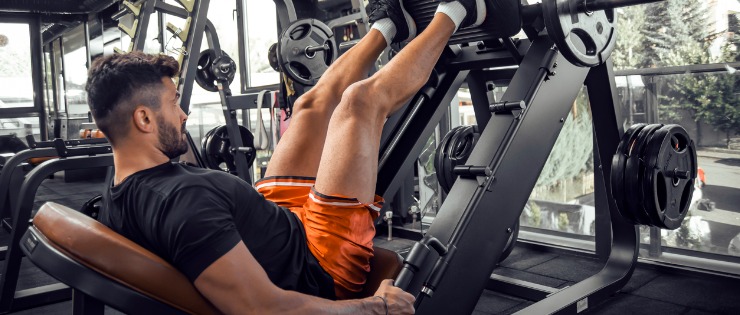
Beginner Core Exercises
Many gym goers are keen to see themselves gain stronger core muscles and to help relieve lower back discomfort. The following exercises can help with the core:
Plank
Supporting your body on your forearms and toes, while you hold a straight line from your shoulders to your ankles, will build a strong core. Try to hold a plank for 30 seconds and slowly increase the time as you get stronger.
Dead Bug
Lying on your back with your arms straight up toward the ceiling, raise your legs with your knees bent at 90 degrees. Slowly lower your right arm and left leg simultaneously so they are hovering just above the floor then return to the starting position before swapping to the opposite limbs.
Leg Lift
Lie on your back with arms on the floor by your sides. Keep your legs straight and slowly lift your legs up toward your face and stop when they are vertical, before slowly lowering them down to the ground. Try to keep your back flat on the floor.
Beginner Upper Body Exercises
If it’s your upper body that you’re concentrating on, try these three exercises to warm up and stretch. It’s a little premature to start bench pressing huge weights, but you can start with other exercises that will deliver benefits.
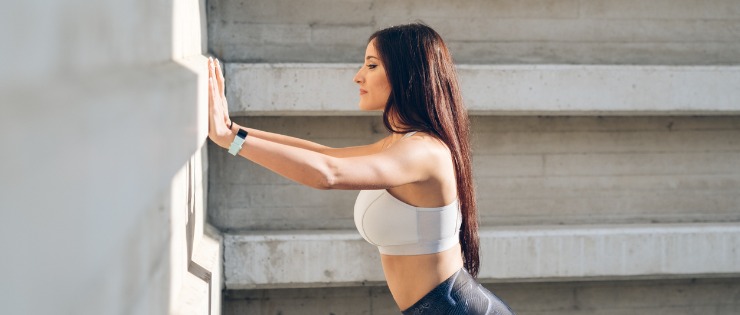
Push-Up on Wall
If you’re unable to do a pushup on the floor, there’s an alternative that won’t put as much pressure on your wrists. With your toes 10cm from the wall, place your hands against the wall in line with your shoulders, then perform push-ups against the wall. You can then progress to placing your hands on a bench, then trying push-ups on the floor using your knees.
Bicep Curl
Hold a dumbbell in each hand with arms by your sides. Keep your arms close to your torso and your palms facing up. As you curl the weights towards your shoulders, keep your elbows tucked into your sides, your shoulders stationary and exhale.
Tricep Dips
Place your hands behind you on the edge of the bench, with your legs either bent or straight out in front of you. Slowly lower your backside vertically towards the ground with your arms and push upwards again. You’ll feel this exercise in your triceps.
Build and Improve Your Fitness
If you’re setting out some exercise goals, such as improving your level of fitness, there are a few ways you can achieve them. Before you set them, take a look at some common exercise goals and tips to keep motivated.
In terms of tracking your progress as you go, increasing your lifting weight is one of the easiest ways to do this. By gradually increasing the weight, you’re continually activating the muscle fibres which encourages muscle growth. Otherwise, you can increase the number of repetitions you do within a set, or the number of sets.
If you’re doing circuit training, you can increase the number of repetitions on each piece of equipment or spend longer on the circuit to increase your fitness.
Nutrition
Fuelling your body is just as important as what you do at the gym. Without the right food, your body can’t perform at its peak and repair itself between sessions. Before you go to the gym for the first time, take a look at the pros and cons of working out on an empty stomach.
Eating Before a Workout
You will want to eat up to two hours before you exercise so you’ll have enough energy to maximise your workout. Eat healthy carbohydrates such as whole grain cereals or whole wheat toast, whole grain pasta, brown rice, and low fat or fat-free yoghurt. If you haven’t eaten and you’re about to hit the gym, have a piece of fruit. Try to avoid slow digesting foods such as protein and saturated fats because you take away oxygen and blood that delivers energy to your muscles.
Hydration
Make sure you’re well hydrated before exercising rather than just relying on fluids while you exercise. Continue to take small, frequent sips of water while you're exercising and throughout the day.
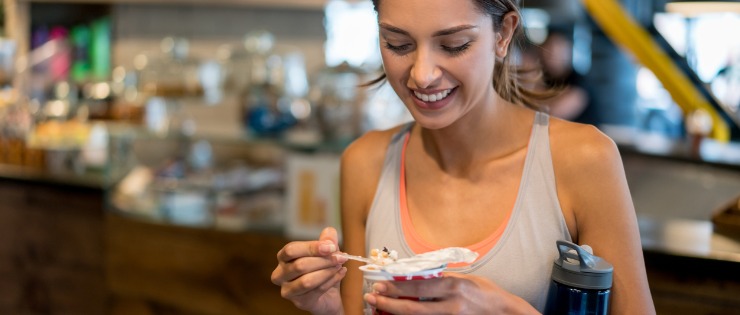
Eating After a Workout
After your gym session is finished, it’s a good idea to eat some kind of protein. It won’t matter if you feel sluggish while you’re digesting the protein; your muscles need it to repair and grow. You will have burnt off any carbohydrates you ate before your workout so you may want to refuel your body with another helping.
Stay away from foods with empty calories that can lead to weight gain and nutritional deficiencies. Once you’re visiting the gym regularly, you’ll want to fuel your body with a healthy diet so it can perform at its peak and you can hit your gym goals.